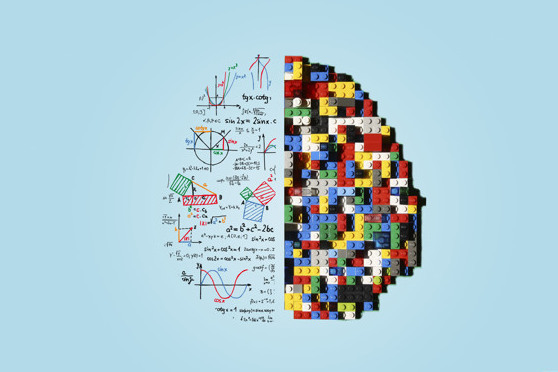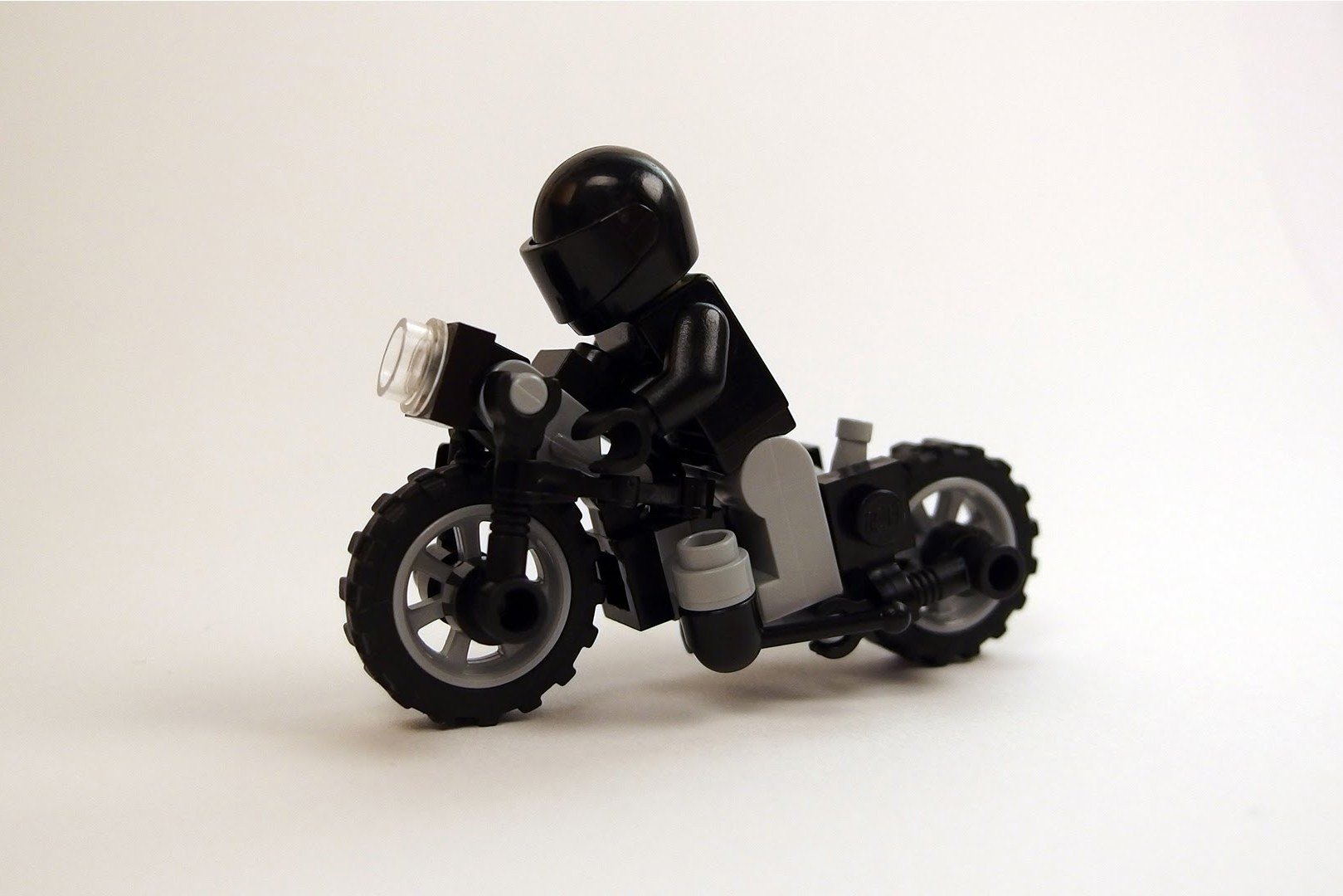Neurotransmitters, part one: dopamine, norepinephrine, serotonin
Neurotransmitters are a holiday that is always with you. We constantly hear that they give feelings of joy and pleasure, but we know little about how they work. In the first part of a small educational course , Atlas tells about the three most famous neurotransmitters, without which our life would be just disgusting.

Nerve cells communicate with each other through processes of axons and dendrites. The gap between them is the so-called synaptic cleft. It is here that the interaction of neurons occurs.
Mediators are synthesized in the cell and delivered to the end of the axon - to the presynaptic membrane. There, under the action of electrical impulses, they enter the synaptic cleft and activate the receptors of the next neuron. After receptor activation, the neurotransmitter returns to the cell (the so-called reuptake occurs) or is destroyed.
The neurotransmitters themselves are not proteins, therefore there is no “dopamine gene” or “adrenaline gene”. Proteins do all the auxiliary work: proteins-enzymes synthesize the neurotransmitter substance, transporter proteins are responsible for delivery, receptor proteins activate the nerve cell. For the correct operation of a single neurotransmitter can be responsible for several proteins - and therefore, several different genes.
Due to the activation of neurons in different areas of the brain, dopamine plays several roles. First, it is responsible for the physical activity and gives the joy of movement. Secondly, it gives a feeling of almost childish delight in learning new things - and the desire to search for novelty. Thirdly, dopamine performs an important function of reward and reinforcement of motivation: as soon as we do something useful for the life of the human species, neurons give us a prize — a feeling of satisfaction (sometimes called pleasure). At a basic level, we get a reward for simple human joys - food and sex, but in general, the options for achieving satisfaction depend on the tastes of each - someone gets a “carrot” for the written code, someone for this article.
The reward system is associated with learning: a person gets pleasure, and new cause-and-effect associations are formed in his brain. And then, when the pleasure passes and the question arises, how to get it again, there will be a simple solution - to write another article.
Dopamine looks like an excellent stimulant for work and school, as well as an ideal drug - most of the drugs (amphetamine, cocaine) are associated with dopamine action, but there are serious side effects. “Overdose” of dopamine leads to schizophrenia (the brain works so actively that it begins to manifest itself in auditory and visual hallucinations), and the lack leads to depressive disorder or the development of Parkinson's disease.
Dopamine has five receptors, numbered from D1 to D5. The fourth receptor is responsible for the search for novelty. It is encoded by the DRD4 gene, the length of which determines the intensity of the perception of dopamine. The smaller the number of repetitions, the easier it is for a person to reach the peak of pleasure. Such people are likely to have enough tasty dinner and a good movie.
The greater the number of repetitions - and there may be up to ten - the harder it is to enjoy. So people have to try to get a reward: go on a world tour, conquer the top of the mountain, make a flip on a motorcycle or put on a red one all the state in Las Vegas. Such a genotype is associated with the range of migration of ancient people from Africa in Eurasia. There are sad statistics: convicts in prisons for serious crimes are more likely to have the “unsatisfactory” version of DRD4.

Norepinephrine is a neurotransmitter for waking and making quick decisions. It is activated under stress and in extreme situations, participates in the “hit or run” reaction. Norepinephrine causes a surge of energy, reduces the feeling of fear, increases the level of aggression. On the somatic level, under the action of norepinephrine, heartbeat increases and pressure increases.
Norepinephrine - a favorite mediator of surfers, snowboarders, motorcyclists and other fans of extreme sports, as well as their counterparts in casinos and gaming clubs - the brain does not make a difference between real events and imaginary ones, so it’s safe for life to lose your fortune in cards enough to activate norepinephrine .
A high level of norepinephrine leads to a decrease in vision and analytical skills, and the lack of - to boredom and apathy.
The SLC6A2 gene encodes a norepinephrine transporter protein. It provides a reuptake of norepinephrine in the presynaptic membrane. From his work depends on how long norepinephrine will act in the human body, after he successfully dealt with a dangerous situation. Mutations in this gene can cause attention deficit disorder (ADHD).

We are used to hearing about him as “the hormone of happiness”, while serotonin is not a hormone at all, and with “happiness” everything is not so simple. Serotonin is a neurotransmitter that not only brings positive emotions, but reduces susceptibility to negative ones. It provides support to "neighboring" neurotransmitters - norepinephrine and dopamine; Serotonin is involved in motor activity, reduces the overall pain background, helps the body in the fight against inflammation. Also, serotonin improves the accuracy of the transmission of active signals in the brain and helps to concentrate.
An excess of serotonin (for example, when using LSD) increases the "loudness" of secondary signals in the brain, and hallucinations occur. A lack of serotonin and an imbalance between positive and negative emotions is the main cause of depression.
The 5-HTTLPR gene encodes a serotonin transporter protein. The gene sequence contains a plot of repeats, the number of which may vary. The longer the chain, the easier it is for a person to maintain a positive attitude and switch from negative emotions. The shorter - the higher the likelihood that a negative experience will be traumatic. Associated with the number of repetitions are sudden infant mortality syndrome, aggressive behavior in the development of Alzheimer's disease and a tendency to depression.

The action of neurotransmitters is like a holiday, as if everyone came out in a joyful crowd outside to watch the fireworks. But the holiday cannot (and should not) last forever, and the neon roses in the night sky must give way to the usual constellations and the morning dawn.
For this, the body has a function of reuptake of the mediator - when the substance returns from the synaptic cleft back to the presynaptic membrane of the axon and the action of the neurotransmitter stops. But sometimes reuptake is not enough, and more effective measures are needed - the destruction of the neurotransmitter molecule. Proteins also perform these functions.
The COMT gene encodes the enzyme catechol-O-methyltransferase, which destroys norepinephrine and dopamine. From the work of the protein depends on how well you will cope with stressful situations. Owners of the active form of the COMT gene — warriors by nature — receive a reduced level of dopamine in the frontal lobe of the brain, which is responsible for information processing and pleasant sensations. Such people better adapt to stressful situations, they are open to communication, they have a better memory. But because of the low level of dopamine, they get less pleasure from life, are more prone to depression, they have less developed motor functions. Inactive variant of the COMT gene reverses the situation. Holders of inactive mutations have good fine motor skills, are more creative, but do not tolerate pain, and once they get into a stressful situation, as they sink into irritability, impulsiveness, and anxiety. Also, COMT gene mutations are associated with parsinsonism and hypertension.

The monoamine oxidase A enzyme gene MAOA is responsible for the deactivation of monoamines - neurotransmitters with one amino group, which include adrenaline, norepinephrine, serotonin, melatonin, histamine, dopamine. The better the MAOA gene works, the faster the “clouding of the mind” caused by the stressful situation is neutralized and the faster a person is able to make informed decisions.
Sometimes even the MAOA gene is called the "criminal genome": certain gene mutations contribute to the occurrence of pathological aggression. Due to the fact that the gene is in the X chromosome, and in girls there are two copies of this gene, and in boys there is only one, among men there are more statistically “born criminals”.
We will not blame everything on genetics - even with respect to the "violent" MAOA gene, everything is not easy: a study by New Zealand scientistsshowed that the relationship between the gene and aggressive behavior is manifested only in the presence of traumatic experience.

Understanding the principles of the work of neurotransmitters allows you to take a fresh look at the usual emotions, mood swings and even reconsider ideas about what actually forms our personality. You can continue the fascinating process of self-knowledge with the Atlas genetic test - an excellent opportunity to find out your version of the COMT and MAOA gene.
PS Second and third part.

How neurotransmitters work
Nerve cells communicate with each other through processes of axons and dendrites. The gap between them is the so-called synaptic cleft. It is here that the interaction of neurons occurs.
Mediators are synthesized in the cell and delivered to the end of the axon - to the presynaptic membrane. There, under the action of electrical impulses, they enter the synaptic cleft and activate the receptors of the next neuron. After receptor activation, the neurotransmitter returns to the cell (the so-called reuptake occurs) or is destroyed.
The neurotransmitters themselves are not proteins, therefore there is no “dopamine gene” or “adrenaline gene”. Proteins do all the auxiliary work: proteins-enzymes synthesize the neurotransmitter substance, transporter proteins are responsible for delivery, receptor proteins activate the nerve cell. For the correct operation of a single neurotransmitter can be responsible for several proteins - and therefore, several different genes.
Dopamine
Due to the activation of neurons in different areas of the brain, dopamine plays several roles. First, it is responsible for the physical activity and gives the joy of movement. Secondly, it gives a feeling of almost childish delight in learning new things - and the desire to search for novelty. Thirdly, dopamine performs an important function of reward and reinforcement of motivation: as soon as we do something useful for the life of the human species, neurons give us a prize — a feeling of satisfaction (sometimes called pleasure). At a basic level, we get a reward for simple human joys - food and sex, but in general, the options for achieving satisfaction depend on the tastes of each - someone gets a “carrot” for the written code, someone for this article.
The reward system is associated with learning: a person gets pleasure, and new cause-and-effect associations are formed in his brain. And then, when the pleasure passes and the question arises, how to get it again, there will be a simple solution - to write another article.
Dopamine looks like an excellent stimulant for work and school, as well as an ideal drug - most of the drugs (amphetamine, cocaine) are associated with dopamine action, but there are serious side effects. “Overdose” of dopamine leads to schizophrenia (the brain works so actively that it begins to manifest itself in auditory and visual hallucinations), and the lack leads to depressive disorder or the development of Parkinson's disease.
Dopamine has five receptors, numbered from D1 to D5. The fourth receptor is responsible for the search for novelty. It is encoded by the DRD4 gene, the length of which determines the intensity of the perception of dopamine. The smaller the number of repetitions, the easier it is for a person to reach the peak of pleasure. Such people are likely to have enough tasty dinner and a good movie.
The greater the number of repetitions - and there may be up to ten - the harder it is to enjoy. So people have to try to get a reward: go on a world tour, conquer the top of the mountain, make a flip on a motorcycle or put on a red one all the state in Las Vegas. Such a genotype is associated with the range of migration of ancient people from Africa in Eurasia. There are sad statistics: convicts in prisons for serious crimes are more likely to have the “unsatisfactory” version of DRD4.
Norepinephrine
Norepinephrine is a neurotransmitter for waking and making quick decisions. It is activated under stress and in extreme situations, participates in the “hit or run” reaction. Norepinephrine causes a surge of energy, reduces the feeling of fear, increases the level of aggression. On the somatic level, under the action of norepinephrine, heartbeat increases and pressure increases.
Norepinephrine - a favorite mediator of surfers, snowboarders, motorcyclists and other fans of extreme sports, as well as their counterparts in casinos and gaming clubs - the brain does not make a difference between real events and imaginary ones, so it’s safe for life to lose your fortune in cards enough to activate norepinephrine .
A high level of norepinephrine leads to a decrease in vision and analytical skills, and the lack of - to boredom and apathy.
The SLC6A2 gene encodes a norepinephrine transporter protein. It provides a reuptake of norepinephrine in the presynaptic membrane. From his work depends on how long norepinephrine will act in the human body, after he successfully dealt with a dangerous situation. Mutations in this gene can cause attention deficit disorder (ADHD).

Serotonin
We are used to hearing about him as “the hormone of happiness”, while serotonin is not a hormone at all, and with “happiness” everything is not so simple. Serotonin is a neurotransmitter that not only brings positive emotions, but reduces susceptibility to negative ones. It provides support to "neighboring" neurotransmitters - norepinephrine and dopamine; Serotonin is involved in motor activity, reduces the overall pain background, helps the body in the fight against inflammation. Also, serotonin improves the accuracy of the transmission of active signals in the brain and helps to concentrate.
An excess of serotonin (for example, when using LSD) increases the "loudness" of secondary signals in the brain, and hallucinations occur. A lack of serotonin and an imbalance between positive and negative emotions is the main cause of depression.
The 5-HTTLPR gene encodes a serotonin transporter protein. The gene sequence contains a plot of repeats, the number of which may vary. The longer the chain, the easier it is for a person to maintain a positive attitude and switch from negative emotions. The shorter - the higher the likelihood that a negative experience will be traumatic. Associated with the number of repetitions are sudden infant mortality syndrome, aggressive behavior in the development of Alzheimer's disease and a tendency to depression.

Neurotransmitter disruption
The action of neurotransmitters is like a holiday, as if everyone came out in a joyful crowd outside to watch the fireworks. But the holiday cannot (and should not) last forever, and the neon roses in the night sky must give way to the usual constellations and the morning dawn.
For this, the body has a function of reuptake of the mediator - when the substance returns from the synaptic cleft back to the presynaptic membrane of the axon and the action of the neurotransmitter stops. But sometimes reuptake is not enough, and more effective measures are needed - the destruction of the neurotransmitter molecule. Proteins also perform these functions.
The COMT gene encodes the enzyme catechol-O-methyltransferase, which destroys norepinephrine and dopamine. From the work of the protein depends on how well you will cope with stressful situations. Owners of the active form of the COMT gene — warriors by nature — receive a reduced level of dopamine in the frontal lobe of the brain, which is responsible for information processing and pleasant sensations. Such people better adapt to stressful situations, they are open to communication, they have a better memory. But because of the low level of dopamine, they get less pleasure from life, are more prone to depression, they have less developed motor functions. Inactive variant of the COMT gene reverses the situation. Holders of inactive mutations have good fine motor skills, are more creative, but do not tolerate pain, and once they get into a stressful situation, as they sink into irritability, impulsiveness, and anxiety. Also, COMT gene mutations are associated with parsinsonism and hypertension.

The monoamine oxidase A enzyme gene MAOA is responsible for the deactivation of monoamines - neurotransmitters with one amino group, which include adrenaline, norepinephrine, serotonin, melatonin, histamine, dopamine. The better the MAOA gene works, the faster the “clouding of the mind” caused by the stressful situation is neutralized and the faster a person is able to make informed decisions.
Sometimes even the MAOA gene is called the "criminal genome": certain gene mutations contribute to the occurrence of pathological aggression. Due to the fact that the gene is in the X chromosome, and in girls there are two copies of this gene, and in boys there is only one, among men there are more statistically “born criminals”.
We will not blame everything on genetics - even with respect to the "violent" MAOA gene, everything is not easy: a study by New Zealand scientistsshowed that the relationship between the gene and aggressive behavior is manifested only in the presence of traumatic experience.

Understanding the principles of the work of neurotransmitters allows you to take a fresh look at the usual emotions, mood swings and even reconsider ideas about what actually forms our personality. You can continue the fascinating process of self-knowledge with the Atlas genetic test - an excellent opportunity to find out your version of the COMT and MAOA gene.
PS Second and third part.
